GRP Pipe Roughness: How to Improve Hydraulic Performance?
Fast or slow? That’s the question that comes up when choosing a pipeline, where GRP pipes with a smooth inner surface provide a quick flow in fluid transmissions. This improved hydraulic performance mainly stems from the low roughness of GRP pipes, including absolute and relative roughness.
GRP pipe roughness indicates internal surface irregularities that decrease the friction and head loss in fluid transmission. GRP pipes feature a high Hazen-Williams C value of 160-165 and a low Manning’s n value of 0.009, resulting in head losses that are reduced by over 30% compared to steel pipes. This reduction in head losses saves approximately 40% in pumping energy for both sewage systems and potable water transmission.
This guide explores GRP pipe roughness through its values, hydraulic implications, advantages, and standards. Let’s dive into the GRP pipe roughness fundamentals for a base understanding:
GRP Pipe Roughness Essentials for Hydraulic Performance
GRP pipe roughness is counted as a practical component in pipeline design and managing the pumping energy cost. In this section, we’ll explain how these aspects are measured and how to reduce the energy losses.
What Is Absolute Roughness?
Absolute roughness (ε) is used for the measurement of the average height of internal pipe surface irregularities, quantified in millimeters (mm) or inches, that affect the friction losses in fluid flow. Absolute roughness in the GRP pipe is measured from 0.01 to 0.029 mm.
The lower the absolute roughness, the lower the head loss in both the Darcy-Weisbach formula and Hazen-Williams equation.
What Is Relative Roughness (ε/D)?
This parameter refers to the ratio of absolute roughness to pipe diameter (D) to define the importance of diameter size in the Moody diagram (Source: ResearchGate). In GRP pipes, low ε/D (e.g., 0.000067 for ε = 0.02 mm, D = 300 mm) provides a low friction to increase the efficiency.
Applications in Hydraulic Calculations
Due to the smooth surface, high speed flow rate, and low friction loss in GRP pipes, the roughness is widely used in the Darcy-Weisbach formula, Manning’s formula, and Hazen-Williams equation.
Darcy-Weisbach Formula: Calculates head loss with relative roughness (ε/D) and friction factor, to reduce the losses in GRP pipes.
Hazen-Williams Equation: Uses C factor (160–165 for GRP) for efficient water flow
Manning’s Formula: Applies n (~0.009 for GRP) for open channels for low resistance.
Values of GRP Pipe Roughness
The roughness of GRP pipes is determined via standardized values in handbooks or manufacturers’ reports, like Manning’s n or Hazen-Williams C Factor. Below, through a comparison table and some technical insights, we’ll clarify the values of GRP pipe roughness:
| Parameter | Standard Values | Manufacturer Data |
|---|---|---|
| Absolute Roughness (ε) | 0.02 mm (NORSOK); 0.01–0.03 mm (Perry’s, Idel’Chik) | 0.01–0.029 mm |
| Hazen-Williams C | ~160–165 | 160–165 (new); 150 (50-year) |
| Manning’s n | ~0.009 | ~0.009 |
| Sources | NORSOK P-001, Perry’s, Idel’Chik | Amiantit, Future Pipe |
| Key Characteristics | Reliable for hydraulic design | Ensures efficiency, smoothness |
Also, here are some additional points on this parameter to show how it affects the performance of the pipeline over the decades:
- Low Friction: ε = 0.02 mm yields a relative roughness of 0.00004 (500 mm pipe), which reduces Friction in the Moody diagram.
- Global Standards: according to Scribd,these standardized values are qualified with EN 14364, for applicability in various engineering contexts.
- Maintenance Reduction: n = 0.009 is used for self-cleaning, reducing the need for maintenance by ~25% compared to the concrete.
How To Design GRP Pipes with a Stable Roughness for Long-Term Performance?
The linings of GRP pipes are mainly made of resin, which creates an absolute roughness of 0.01-0.029 mm for a long-lasting lifespan, while steel pipes can’t resist corrosive conditions and fail when GRP pipes provide ~95% less head loss variation and stable flow (~1.2 m³/s in a 400 mm pipe) in sewage systems.
Comparison of Pipe Materials Roughness
To select the proper pipeline for the project, one must understand the roughness of each type of pipe: GRP, steel, concrete, or galvanized iron pipes. This section compares GRP pipes with other pipelines based on their roughness rates.
GRP Pipes: with ε= 0.01-0.029 and C= 160-165, GRP pipes are resistant to corrosion and stay smooth for over 50 years.
Steel Pipes: Steel starts at 0.046 mm roughness but can hit 0.46 mm when corroded.
Concrete Pipes: With roughness of 0.3–3.0 mm, concrete pipes are rough, but require higher pumping energy.
PVC/Polyethylene (PE) Pipes: In smaller municipal water systems, these pipes perform as well as GRP pipes, but include a weaker structure, so they can’t handle high-pressure loads like GRP.
Cast Iron and Galvanized Iron: Unlike GRP pipes, the higher roughness in these pipes increases Friction and costs in industrial pipelines.
| Material | Absolute Roughness (mm) | Hazen-Williams C | Manning’s n |
|---|---|---|---|
| GRP Pipes | 0.01–0.029, 0.02 (NORSOK) | 160–165 (new), 150 (long-term) | ~0.009 |
| Steel Pipes | 0.046 (new), 0.46 (corroded) | 120 (new), ~65 (corroded) | 0.012–0.015 |
| Concrete Pipes | 0.3–3.0 | 100–140 | 0.012–0.015 |
| PVC/PE Pipes | ~0.005 | 150–160 | 0.009–0.011 |
| Cast Iron | ~0.26 | 100–120 | 0.013–0.015 |
| Galvanized Iron | ~0.15 | 120–130 | 0.015–0.017 |
Hydraulic Implications of GRP Roughness
The low roughness of GRP pipes develops hydraulic performance through a decrease in friction loss and maintenance, and an increase in flow rate in various applications.
How Does Roughness Affect the Friction Factor and Head Loss?
GRP pipe smoothness and low roughness reduce the friction and head loss compared to steel, decreasing the cost of pumping energy up to 30% in sewage systems.
Flow Capacity Comparison
Let’s check out how GRP pipe outperforms steel pipe per Hazen-Williams and flow rate:
| Material | Diameter (in/mm) | Hazen-Williams C | Flow Rate (m³/s) | Key Implications |
|---|---|---|---|---|
| GRP Pipe | 12″ / 304.8 mm | 150 (long-term) | ~1.2 | Matches steel’s flow with smaller diameter, saving ~15–20% on material costs. |
| Steel Pipe | 14″ / 355.6 mm | 100 (corroded) | ~1.2 | Larger diameter increases costs; corrosion reduces efficiency. |
Self-Cleaning and Deposit Resistance
GRP pipes’ super smooth surface prevents grease, making them perfect for sewage systems and industrial fluids. With a Manning roughness for GRP (~0.009), a 500 mm GRP pipe at 0.01 slope reaches ~1.2 m/s flow, exceeding the 0.6 m/s self-cleaning threshold, unlike concrete (~0.9 m/s, n = 0.012–0.016).
Water Quality and Hygiene Advantages of GRP Pipes
GRP pipes are popularly used in water and wastewater systems due to the corrosion resistance of the resin-rich inner layer, which keeps the water safe and clean for drinking purposes. Here’s why they’re top choices for these systems.
Food-Grade Resin Liner for Potable Water
The inner surface of GRP pipes is covered by resin for potable water transmission applications, while this layer prevents the leaching of harmful particles into the water based on health standards.
Non-Reactive with Chemicals
Unlike steel, which can corrode under chlorine or harsh wastewater chemicals, GRP pipes have no reaction and stay stable for decades.
No Microbial Growth
In dark or buried installations where the risk of microbial growth threatens pipelines, GRP pipes’ smooth surface prevents contamination risks and keeps water hygienic in municipal water systems.
Energy and Lifecycle Cost Benefits
GRP pipes are a top choice for sewage and potable water transmission systems because they save money and energy over time. Their corrosion-free, smooth design significantly reduces maintenance and operating expenses.
Energy Savings in Operation: According to the Darcy-Weisbach equation, the low absolute roughness of GRP’s fiberglass pipe (0.02 mm) lowers head loss to about 30.85 m over 10 km for a 500 mm pipe at 2 m/s flow, as opposed to about 58.62 m for corroded steel (0.46 mm).
Cost of Maintenance and Lifecycle: Unlike steel, GRP pipes don’t corrode, so they don’t require expensive protective coatings. Cleaning requirements are decreased by their smooth bore (Manning’s n ~0.009).
Environmental And Structural Considerations of GRP Pipe
GRP pipes are an excellent option for industrial pipelines, sewage networks, and potable water systems because they are not only durable but also environmentally friendly and long-lasting. They easily manage harsh conditions and decrease emissions.
Environmental Advantages Over Concrete Pipes
Because GRP pipes have lower wall thickness and less mass than concrete, they include about 30% lower carbon footprint. Approximately 700 kg of CO2 is saved per kilometer when a 500mm GRP pipe is produced, as opposed to 2.2 tons when concrete is used. GRP supported greener infrastructure by reducing emissions by about 7 tons in a 10-kilometer water project.
Mechanical Performance
ScienceDirect highlights that GRP pipes can handle external loads due to their high ring stiffness (SN 2,500–10,000 N/m²). They are perfect for seismic zones because they can deform up to 40% with no cracks.
They are more durable than steel in harsh environments, such as acidic wastewater networks, due to their resistance to UV and aggressive acid.
Guideline For Pipeline Selection and Design
To prevent the following costs of repairing or maintenance, the proper selection of GRP pipes paves the way for long-lasting pipelines for potable water, wastewater, and industrial piping systems.
Roughness Values for Design: In conservative designs, 0.02 mm absolute roughness is suggested, while for new installations, for proper flow, use 0.01-0.015 to save costs around 20%.
Accounting for Pipe Aging: Unlike steel pipes that can reach 0.46 of roughness, GRP pipes remain with no corrosion for more than 50 years.
Take a look at the table below for several applications and how roughness affects the pipeline selection:
| Application | Key Features | Benefits |
|---|---|---|
| Potable Water | Smooth bore, food-grade liner | Ensures clean, safe flow |
| Sewage | Low Manning roughness for GRP (~0.009) | Prevents clogs, cuts maintenance ~40% |
| Industrial | Resists chemicals, seawater | Saves ~$200,000/year vs. steel |
Standards and Reference Sources
The reliable GRP pipe roughness values can determine the proper design based on international standards. This section suggests relatable standards and guidelines for the roughness of GRP pipes.
- NORSOK P-001: Contains 0.02 mm absolute roughness of fiberglass pipe for GRP, perfect for conservative hydraulic calculations.
- Perry’s Chemical Engineers’ Handbook: Works as a guideline for industrial applications via standardized data.
- Idel’Chik Handbook: Supports 0.01–0.029 mm roughness and shapes turbulent flow analysis in sewage systems.
- EN 14364, ISO 10952, EN 1120: These standards mainly provide a reliable compliance for GRP pipes across various applications like potable water systems.
- Pipe Flow Database: Includes comparative roughness data (GRP, PVC, steel) that helps to design wastewater networks.
Final Wrap Up
GRP pipes’ low roughness shapes a smooth hydraulic performance in mobile water and sewage systems, where steel pipes corrode more easily and increase the costs up to 30% compared to GRP pipes. In conservative designs, 0.02 mm roughness and Hazen-Williams C values of 150, and for new installation, C value of 160-165 to develop the efficiency and save pumping energy costs.
FAQs
1- What hygiene benefits do GRP pipes offer for potable water?
The inner surface of GRP pipes is covered by resin for potable water transmission applications, while this layer prevents the leaching of harmful particles into the water based on health standards.
2- What’s the environmental benefit of GRP over concrete pipes?
Because GRP pipes have lower wall thickness and less mass than concrete, they include about 30% lower carbon footprint.
3- How does GRP’s deformability aid in seismic zones?
They are perfect for seismic zones because they can deform up to 40% with no cracks.

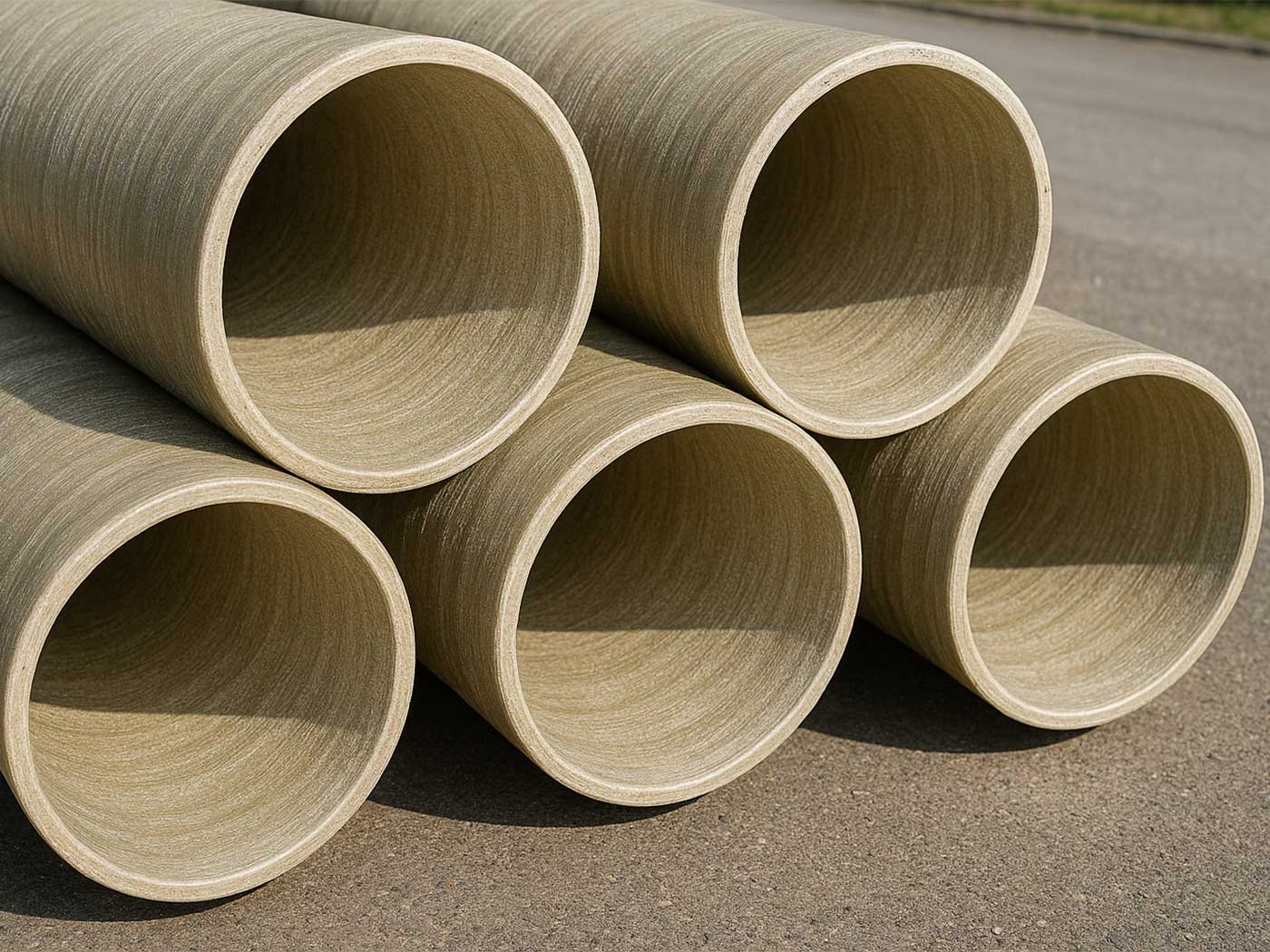
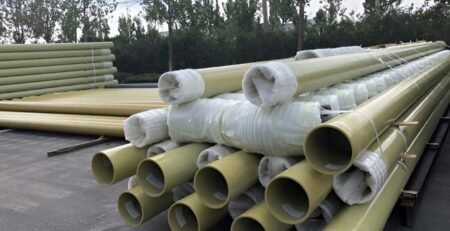
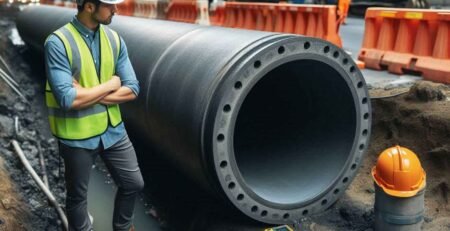

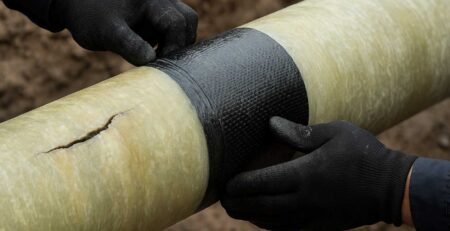
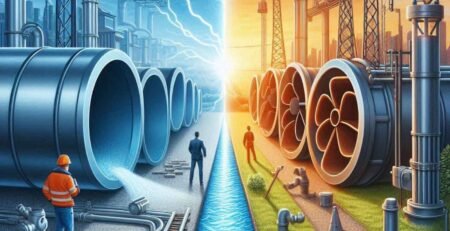
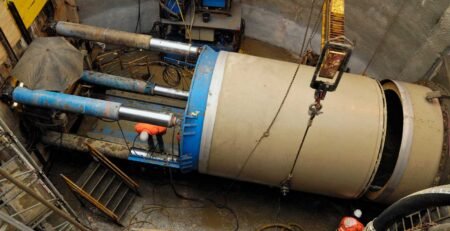
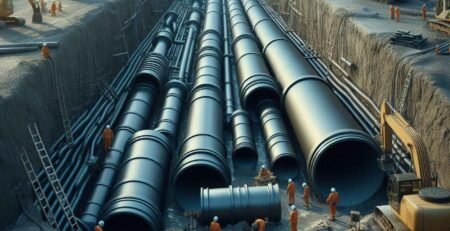
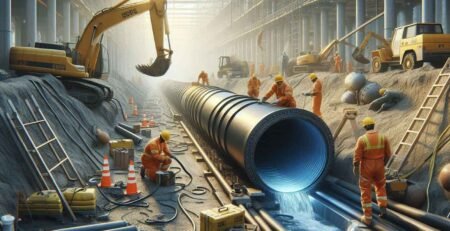
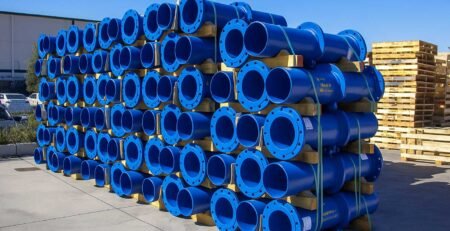

Leave a Reply